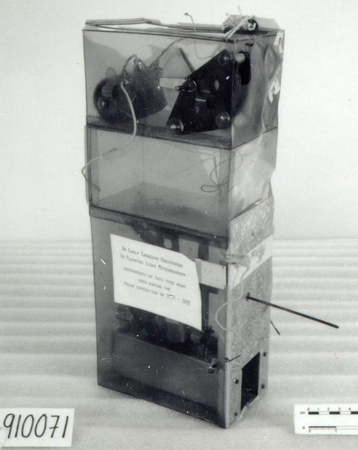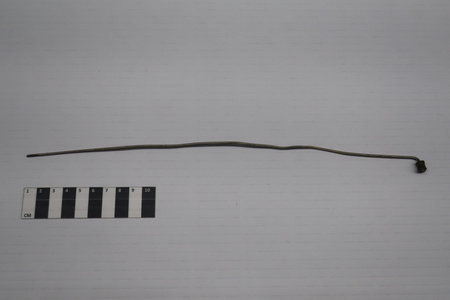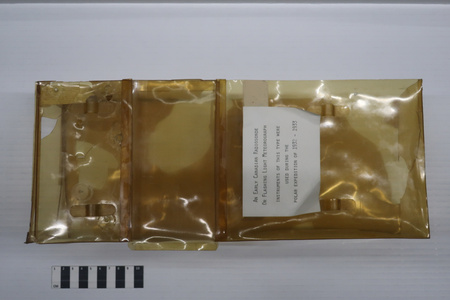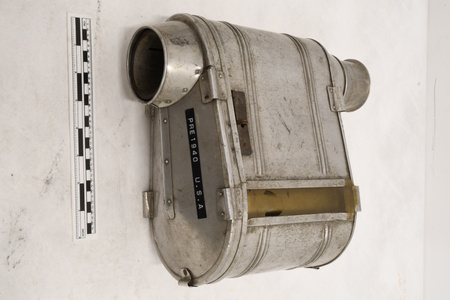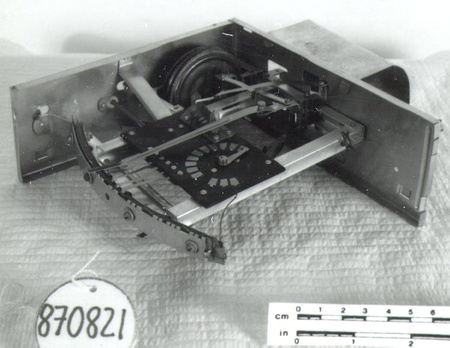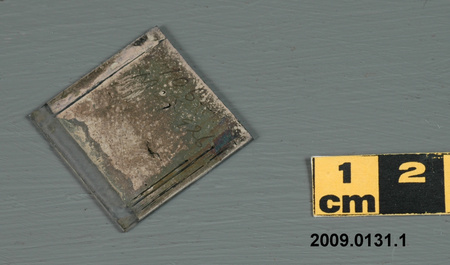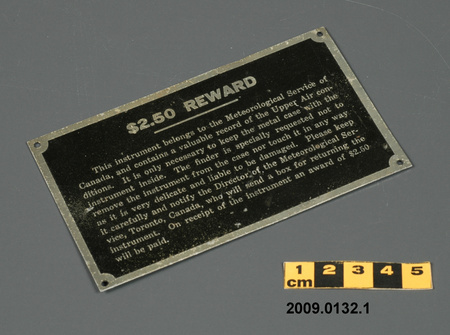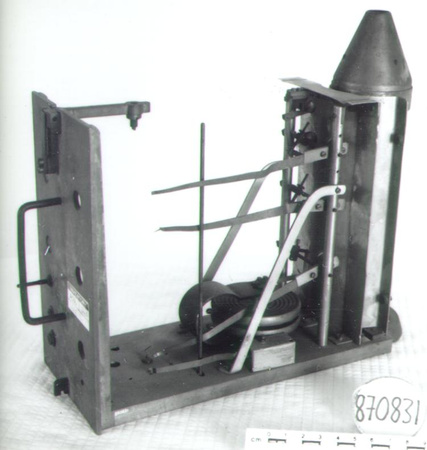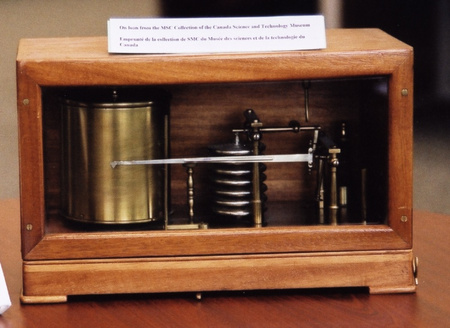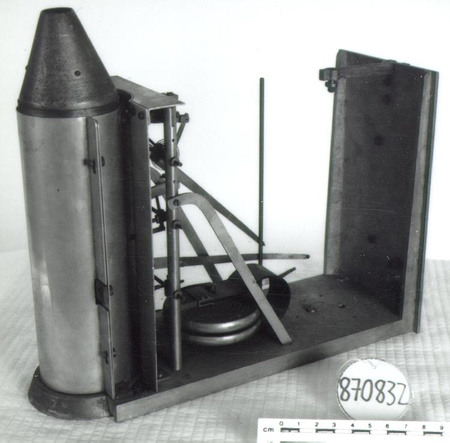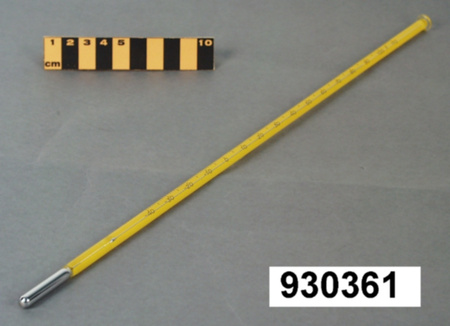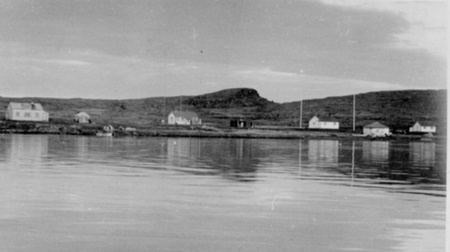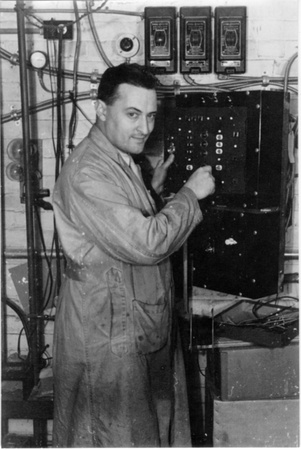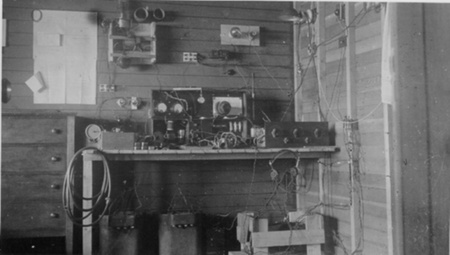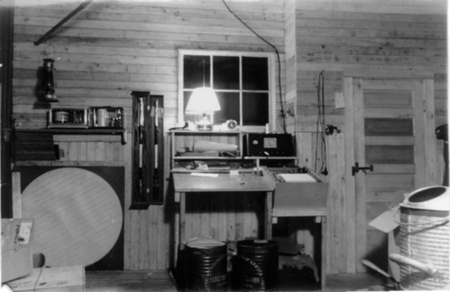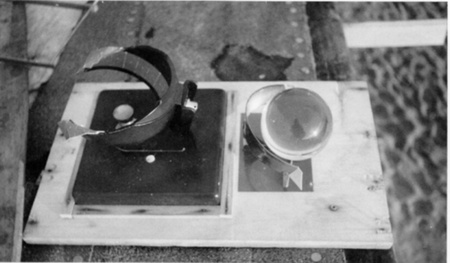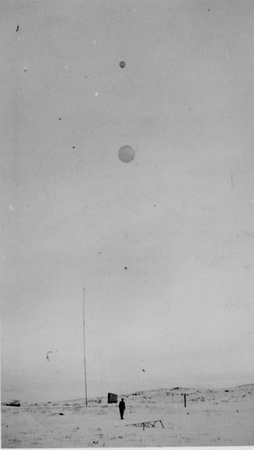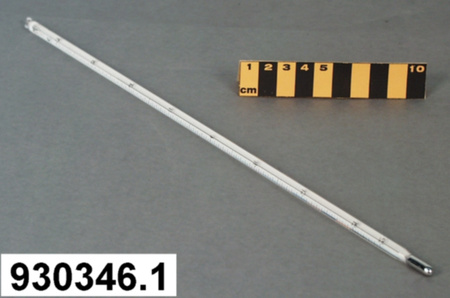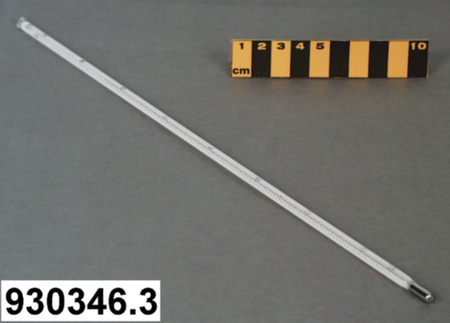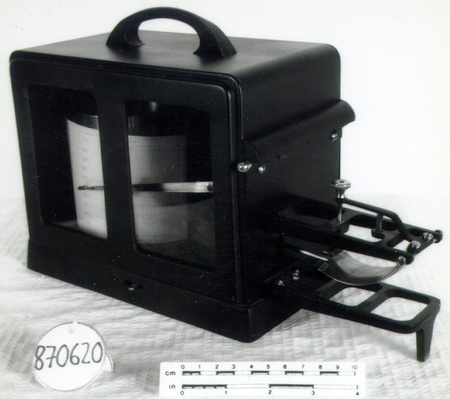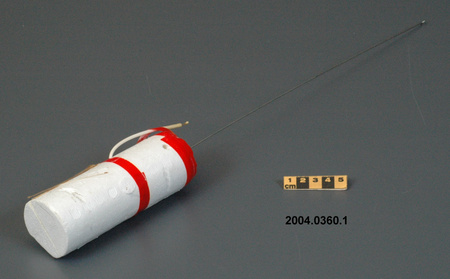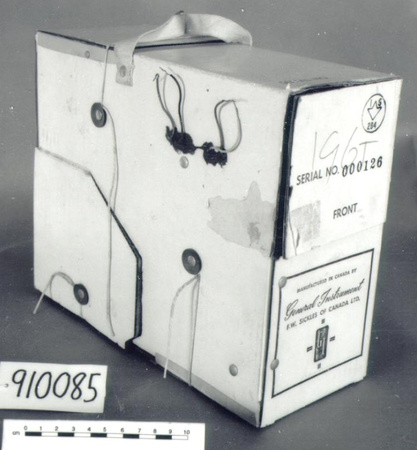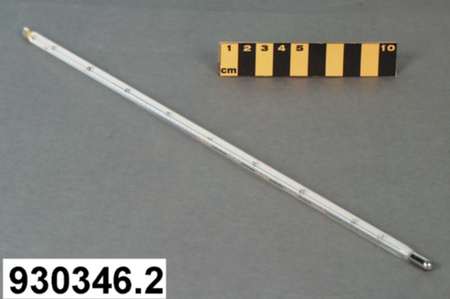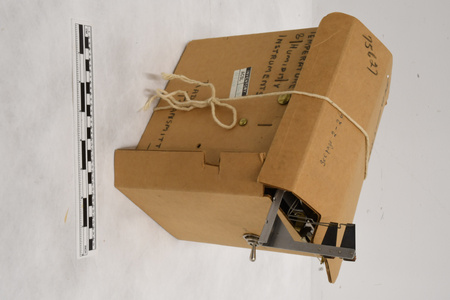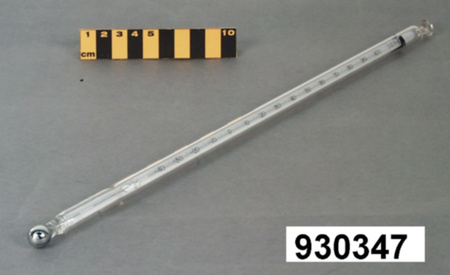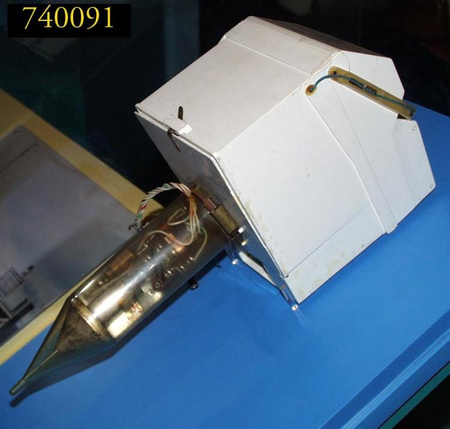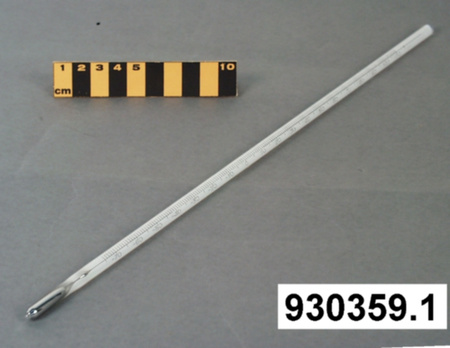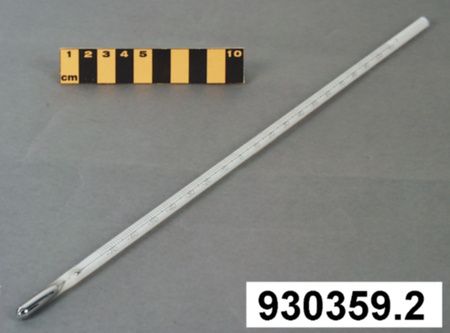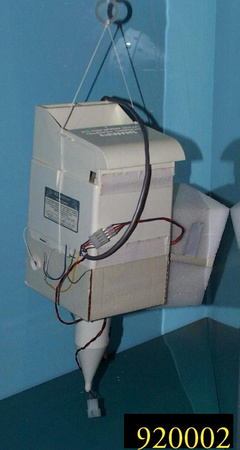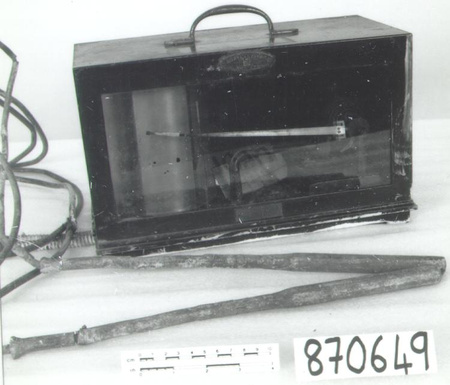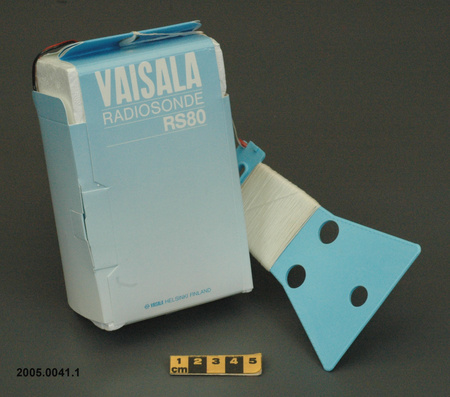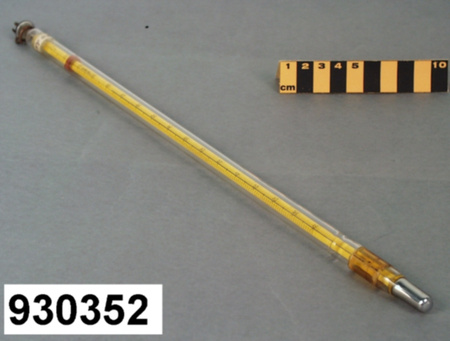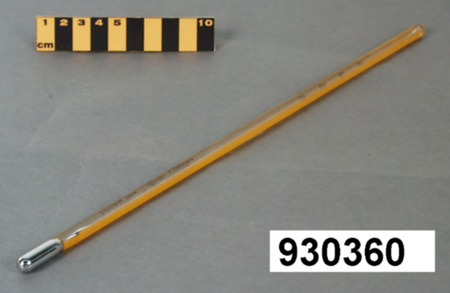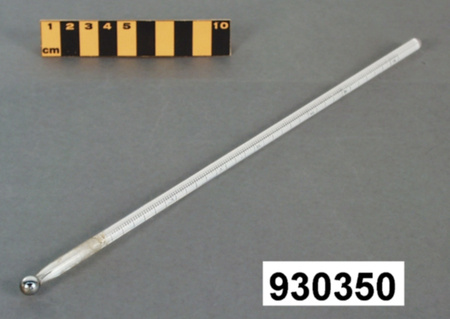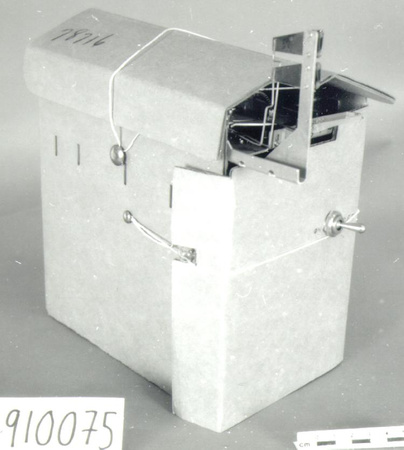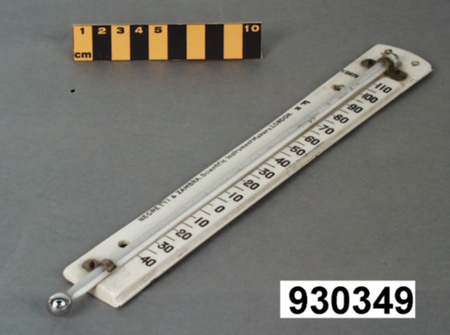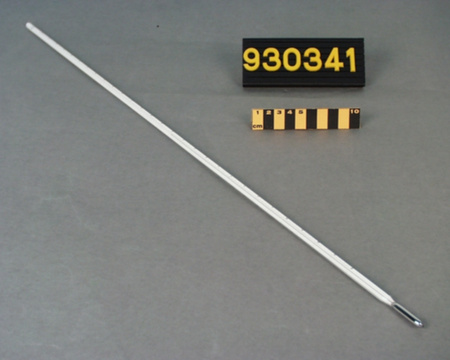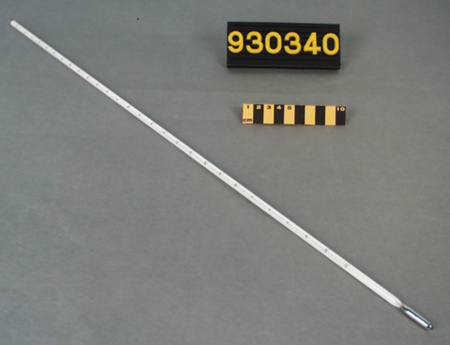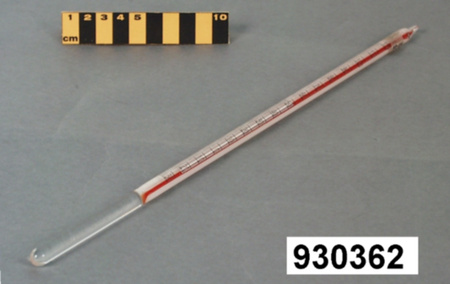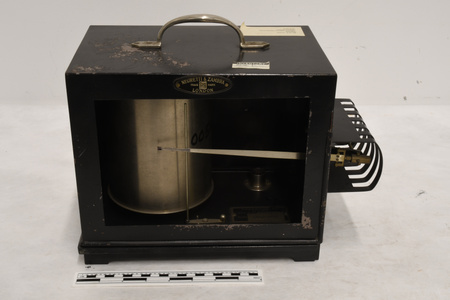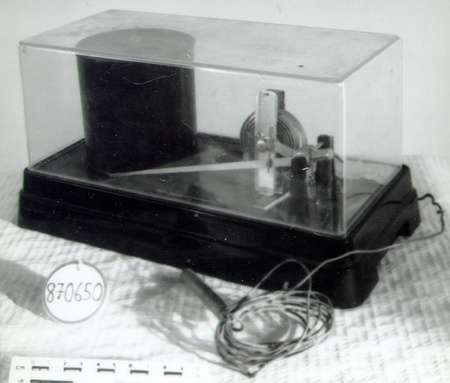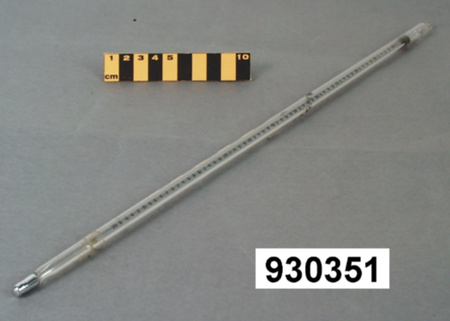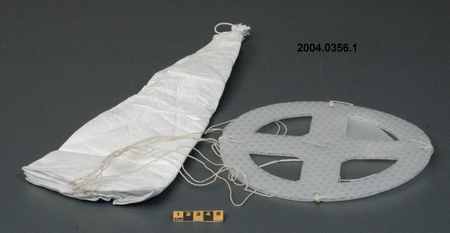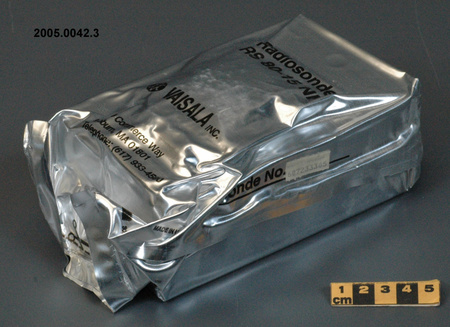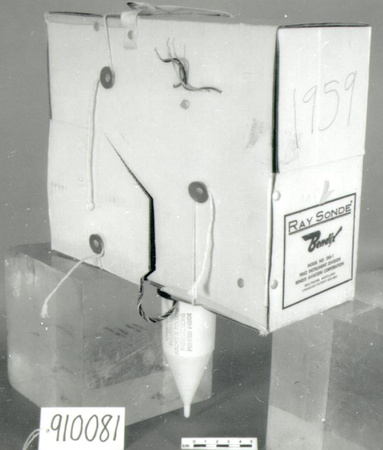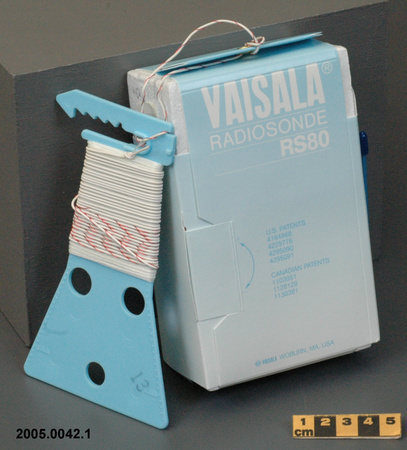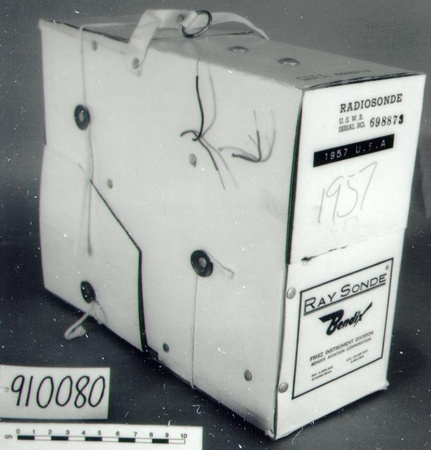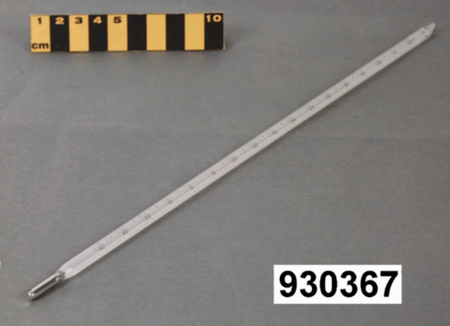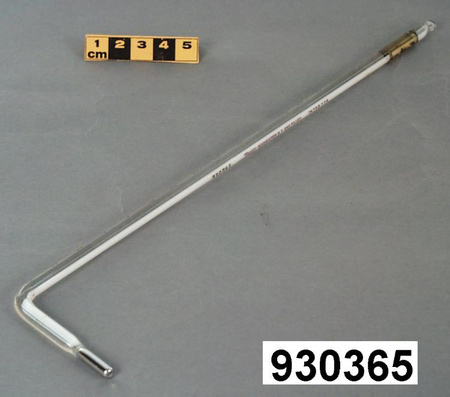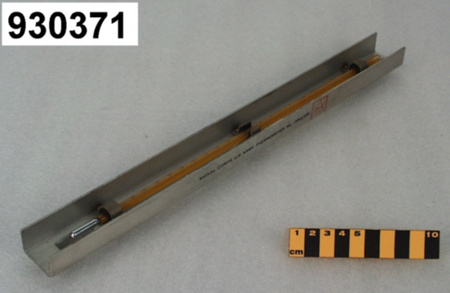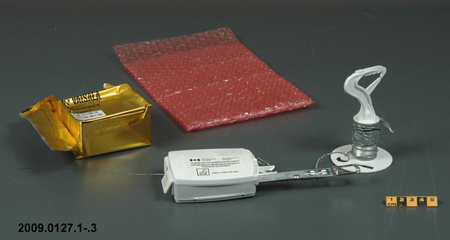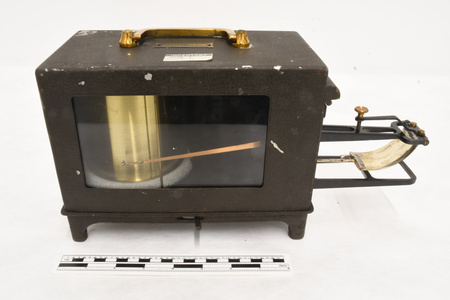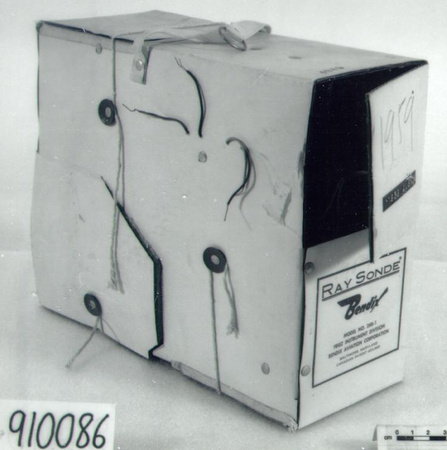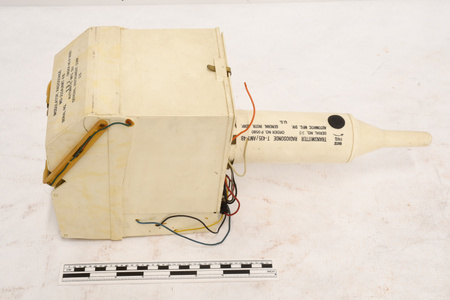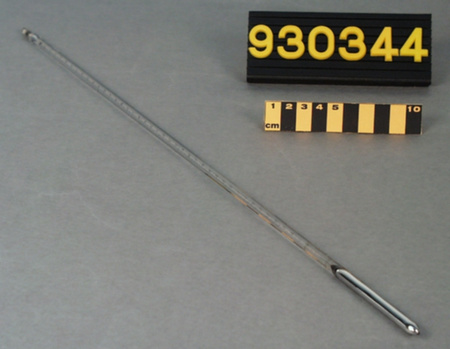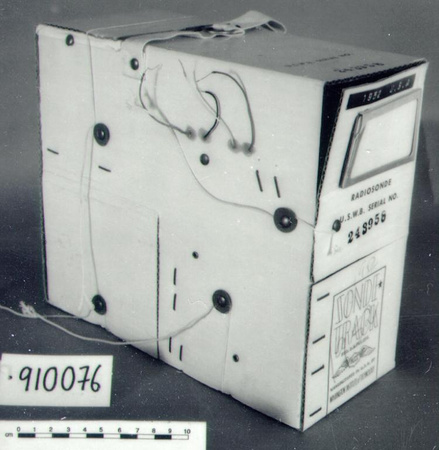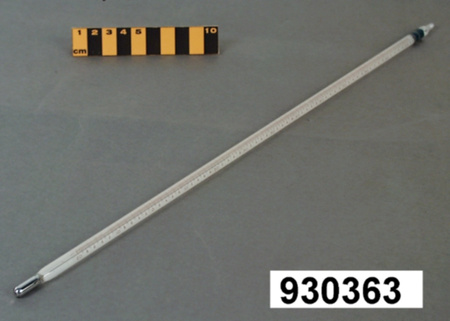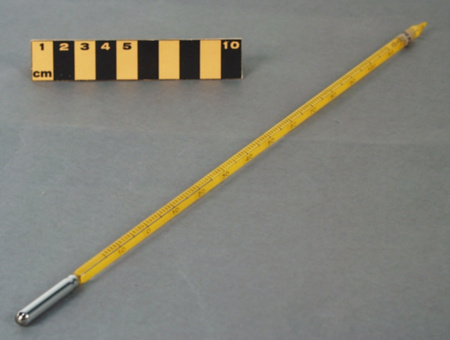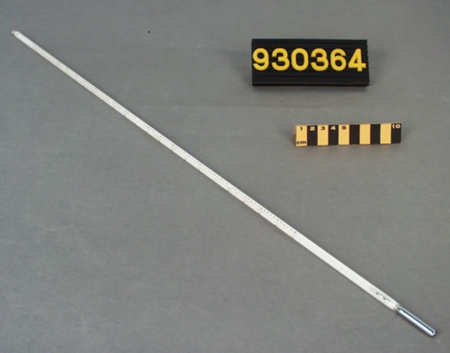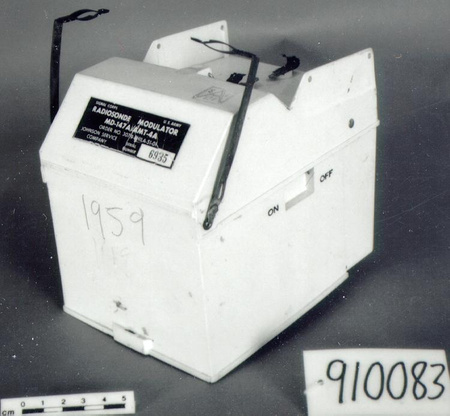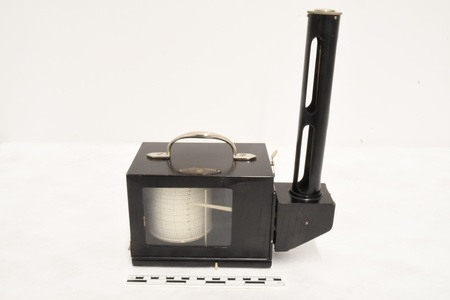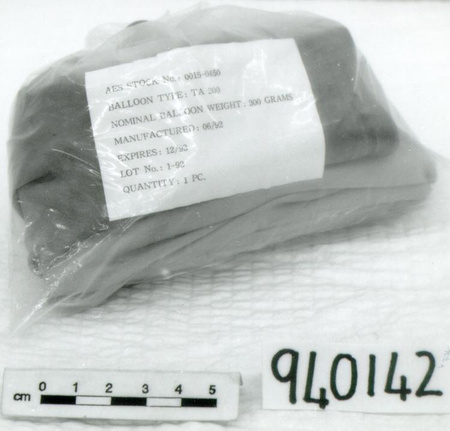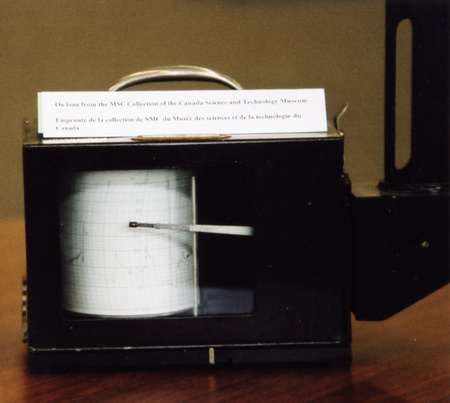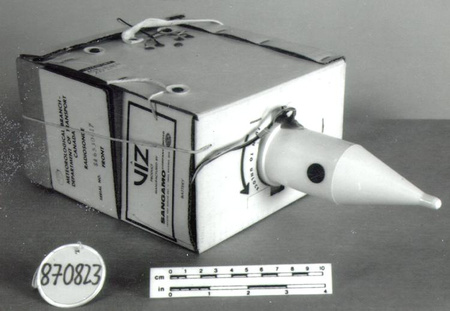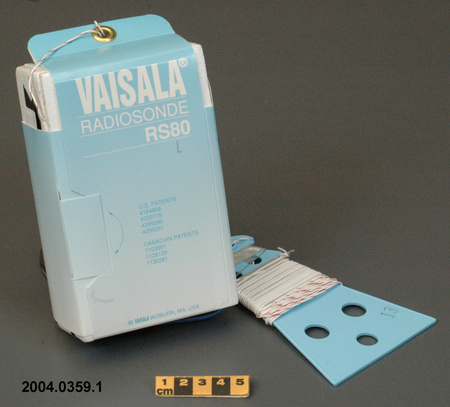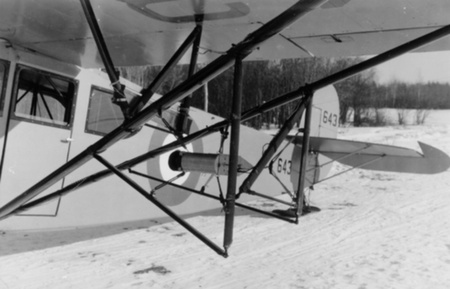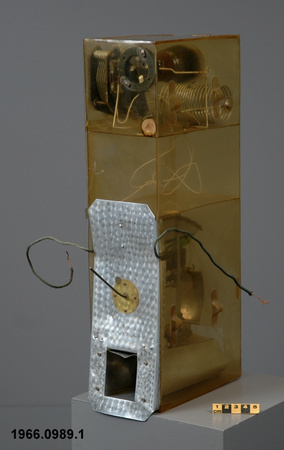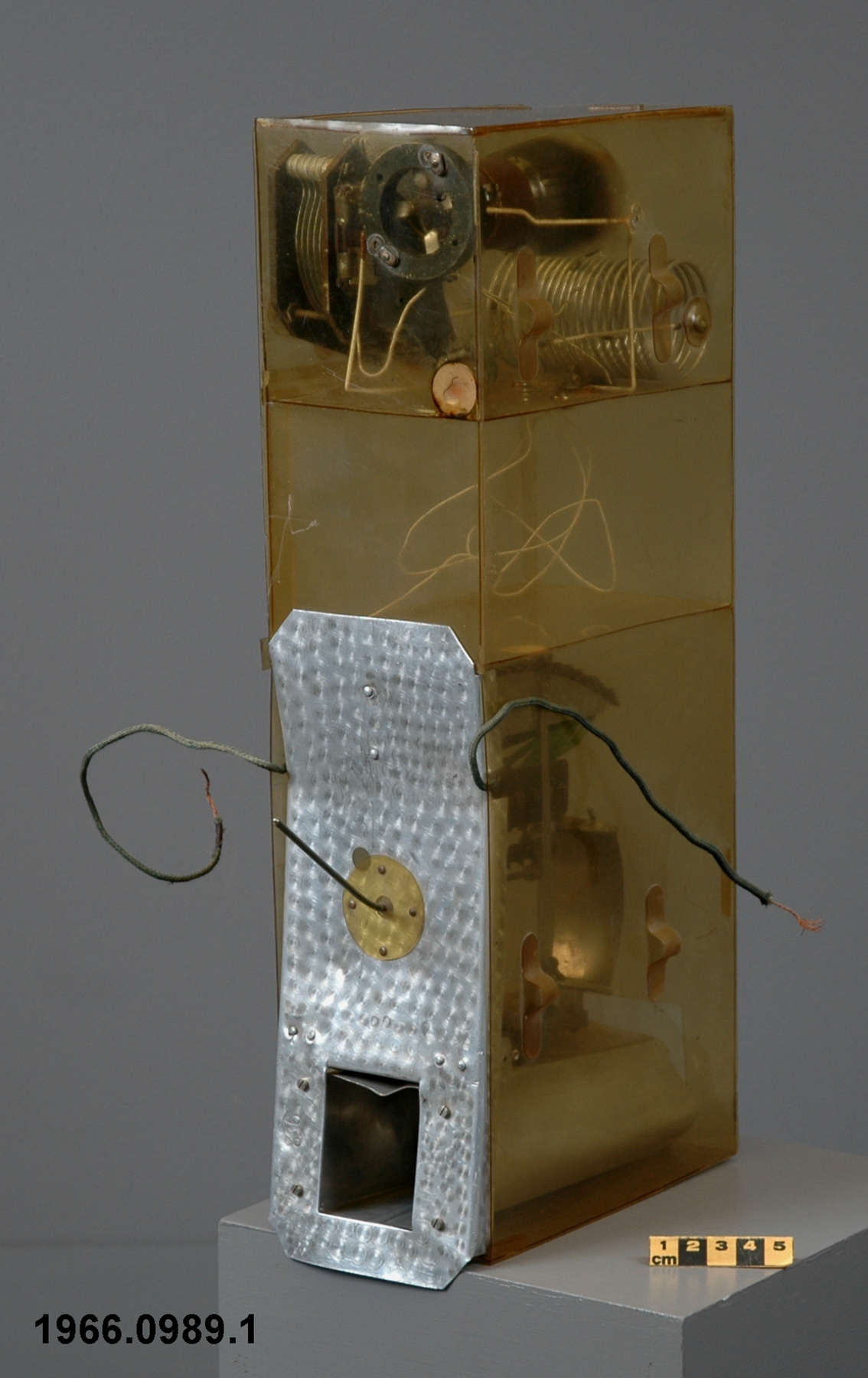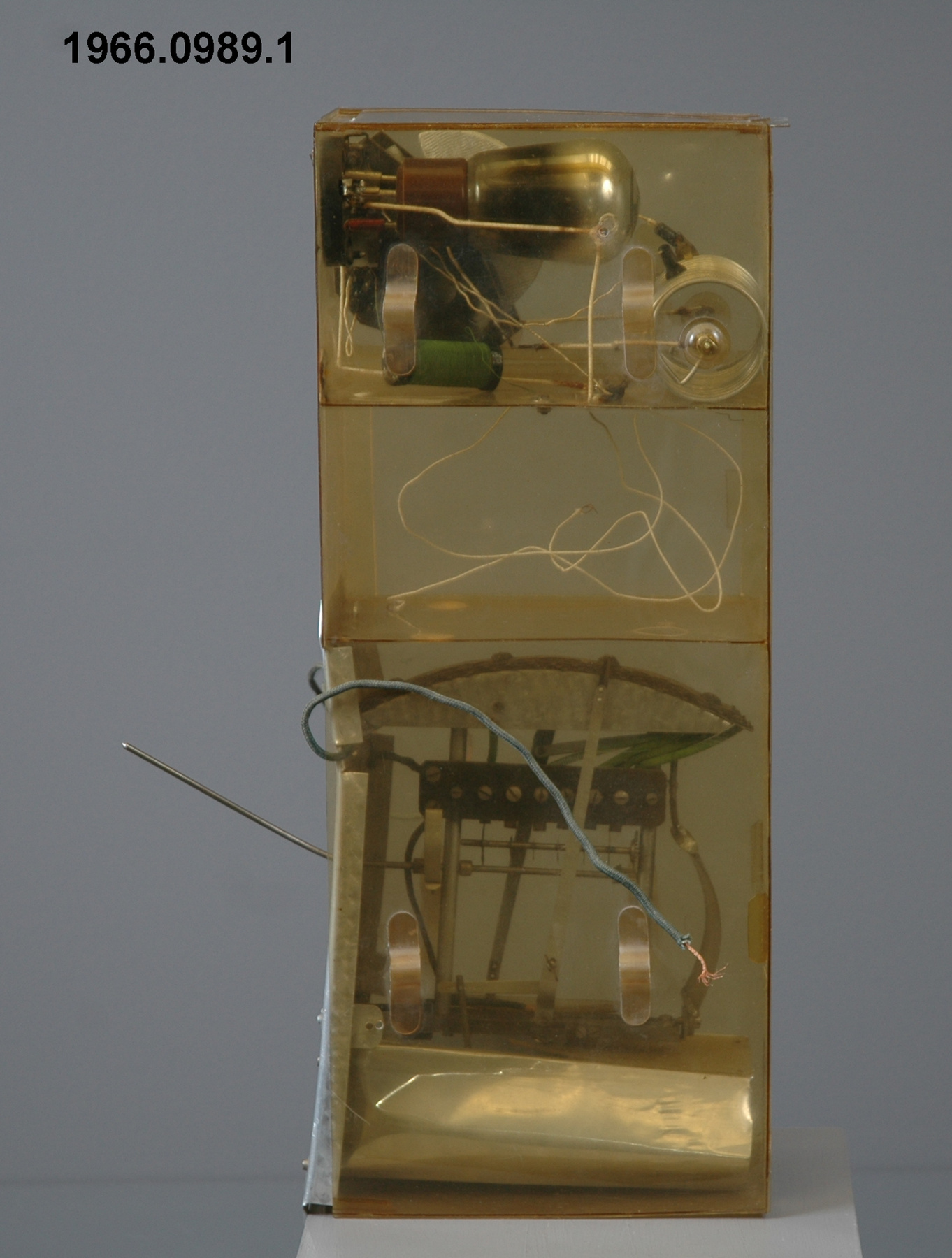Meteorograph
Use this image
Can I reuse this image without permission? Yes
Object images on the Ingenium Collection’s portal have the following Creative Commons license:
Copyright Ingenium / CC BY-NC-ND (Attribution-NonCommercial 4.0 International (CC BY-NC 4.0)
ATTRIBUTE THIS IMAGE
Ingenium,
1966.0989.001
Permalink:
Ingenium is releasing this image under the Creative Commons licensing framework, and encourages downloading and reuse for non-commercial purposes. Please acknowledge Ingenium and cite the artifact number.
DOWNLOAD IMAGEPURCHASE THIS IMAGE
This image is free for non-commercial use.
For commercial use, please consult our Reproduction Fees and contact us to purchase the image.
- OBJECT TYPE
- balloon/Moltchanoff
- DATE
- 1932
- ARTIFACT NUMBER
- 1966.0989.001
- MANUFACTURER
- Unknown
- MODEL
- Unknown
- LOCATION
- Unknown
More Information
General Information
- Serial #
- N/A
- Part Number
- 1
- Total Parts
- 1
- AKA
- N/A
- Patents
- N/A
- General Description
- plastic casing/ metal instrument chassis and casing part/ metal and synthetic mechanism/ glass, metal & synthetic vacuum tube/ fibre wire covering
Dimensions
Note: These reflect the general size for storage and are not necessarily representative of the object's true dimensions.
- Length
- 11.5 cm
- Width
- 23.5 cm
- Height
- 40.0 cm
- Thickness
- N/A
- Weight
- N/A
- Diameter
- N/A
- Volume
- N/A
Lexicon
- Group
- Meteorology
- Category
- Upper air pressure, temperature & humidity measurement
- Sub-Category
- N/A
Manufacturer
- AKA
- Unknown
- Country
- Unknown
- State/Province
- Unknown
- City
- Unknown
Context
- Country
- Canada
- State/Province
- Northwest Territories
- Period
- 1932-1933 International Polar Year
- Canada
-
An instrument of a type used at one of Canada's four International Polar Year stations, identical to 1991.0071. The latter came with an attached label reading "An early Canadian Radiosonde or Flashing Light Meteorograph. Instruments of this type were used during the Polar expedition of 1932-1933." A tag attached to 1991.0071 is stamped "Coppermine/ Polar-Year Stn" & signed "R.C. Jacobson/ Coppermine/ 12 July 33". The instrument 1966.0989 pt is likely also an example of the type of meteorograph used during the 1932-1933 International Polar Year at the Canadian stations The International Polar Year was organized by an International Meteorological Conference of Directors in 1929 to commemorate the 50th anniversary of the Polar Year of 1882-83. The objective was to establish as many stations as possible in Polar Regions where intensive observations of meteorological, magnetic, auroral, and other phenomena could be undertaken from August 1, 1932 to August 31, 1933. Canada's four stations were at Coppermine and Chesterfield Inlet in the North West Territories, Cape's Hope Advance in northern Quebec and Meanook, Alberta. Coppermine was the principal meteorological station. Upper atmospheric readings were taken at Coppermine and Chesterfield Inlet using Marvin kite meteorographs on loan from the U.S weather service; the flashing light balloon meteorograph developed by John Patterson, Director of the Canadian Meteorological Service was employed at Coppermine also. As well as the Marvin and Patterson meteorographs, Moltchanoff coded radiosondes were used at Coppermine. Twelve Moltchanoff and three Duckert radiosondes were given to the Meteorological Service of Canada for these expeditions by the International Polar Commission, having been donated by the Rockefeller Foundation. The Moltchanoff instruments were not generally successful (Ref. 1). - Function
-
A device raised by balloon into the upper atmosphere to read atmospheric pressure and temperature. These readings were expressed by flashing lights attached to the balloon, which could be seen by observers on the ground. - Technical
-
Quoted from Ken Devine: "Moltchanoff radiosonde from Russia. It looks like the one numbered as 910071 and had in the public display. My picture of the radiosonde in the display is attached as IMG0119. This unit used a curved Bourdon tube pressure sensor located in the square metal tube at one end along with the temperature sensor (circular bimetal) and the hair hygrometer. The Moltchanoff radiosonde can be identified by the large curved "comb" which supplies the Morse code output for the transmitter. There is another Moltchanoff radiosonde in your collection namely 870821which has an aneroid as the pressure sensor. Twelve of these radiosondes were supplied to MSC for the Second Polar Year, 1932-33 but which of these two (910071 or 870821) belongs to that group? I suspect that it is the one with the bourdon tube pressure sensor (910071) and the one with aneroid (870821) is a later version but I have no proof. All of the documentation I have only shows the Bourdon tube pressure sensor. See Catalogue of Meteorological Instruments, Middleton, 1969. Initially these devices with RF transmitters were called meteorographs but when Bureau came up with the term radiosonde the name was changed. The term meteorograph is usually applied to mechanical devices with multiple sensors. These were used on the ground, on aircraft and on free balloons but they do not have RF transmitters." - Area Notes
-
Unknown
Details
- Markings
- number '958' stamped into metal of casing
- Missing
- unknown
- Finish
- transparent yellowed synthetic casing/ hammered metal casing part/ brown synthetic and metallic parts/ grey, green and white wire covering
- Decoration
- N/A
CITE THIS OBJECT
If you choose to share our information about this collection object, please cite:
Unknown Manufacturer, Meteorograph, circa 1932, Artifact no. 1966.0989, Ingenium – Canada’s Museums of Science and Innovation, http://collection.ingenium.ca/en/id/1966.0989.001/
FEEDBACK
Submit a question or comment about this artifact.
More Like This
